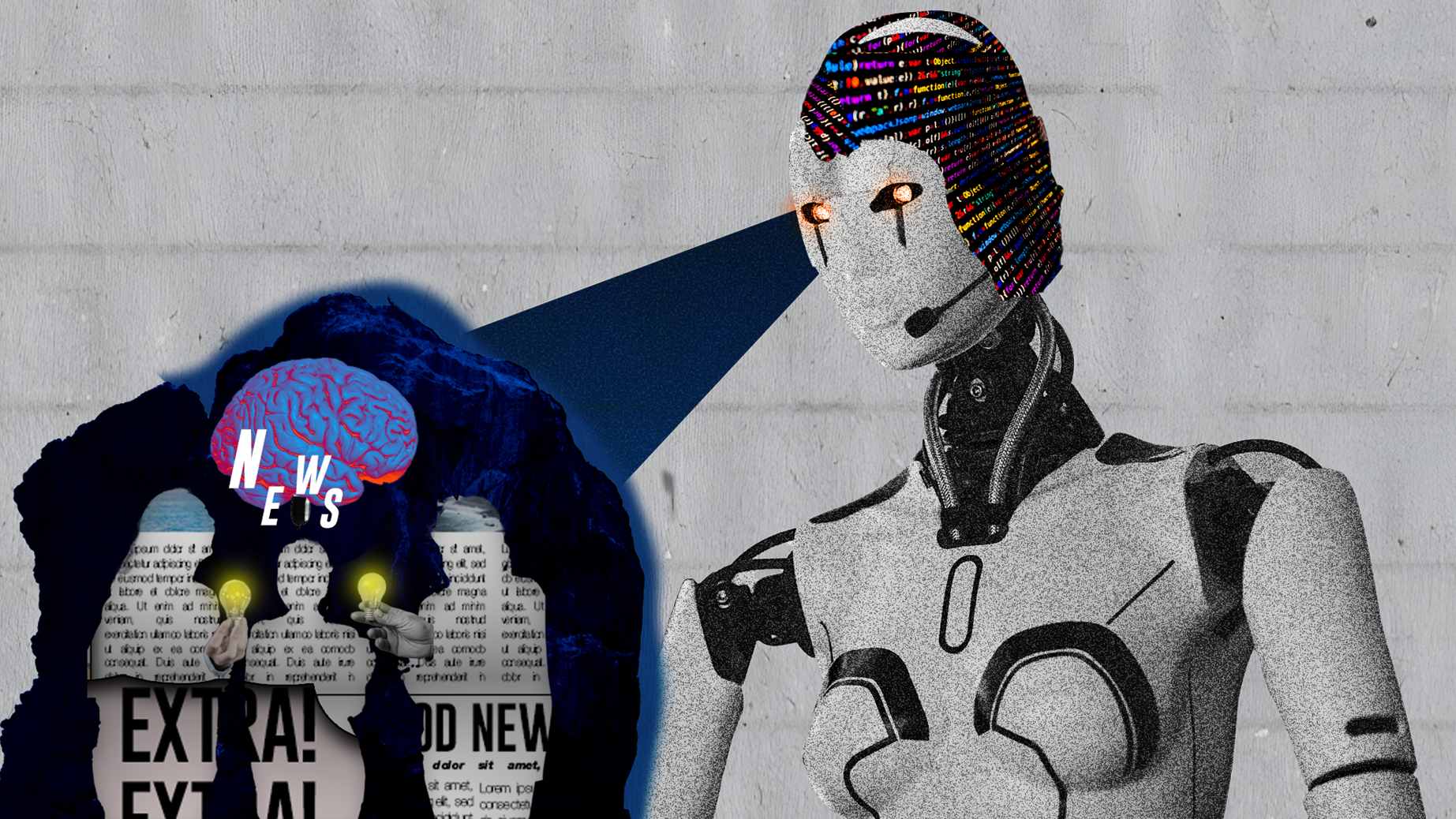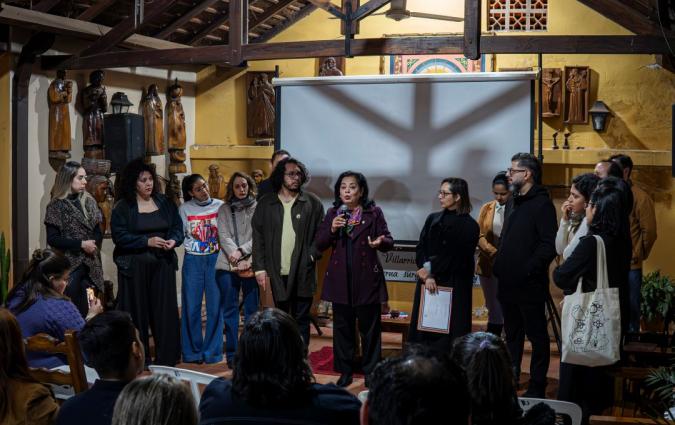In this piece
Knowledge capital in newsrooms: brand, audience and talent in the AI-mediated era

While artificial intelligence rapidly ingests and replicates content, the human brain behind the news – rich in institutional memory and meaning – is often left in shadow. Credit: Ethieny Karen
In this piece
Brand: more than a logo | Audience: from reach to relationship | Audience knowledge as investment signal | Institutional knowledge: the invisible asset | Talent: the living engine | From content to knowledgeIn a post‑platform, AI‑mediated era, newsrooms face a fundamental shift. Platforms that once drove traffic are fragmenting, generative AI is disrupting distribution, and audiences are overwhelmed by commoditised content.
In this project, I argue that the resilience of journalism will increasingly depend on assets that are harder to copy:
- Brand (identity, trust, and differentiation)
- Audience (loyalty, insight, and co‑creation)
- Talent (knowledge, creativity, and culture)
- Institutional knowledge (systems, processes, and shared expertise)
These are forms of knowledge capital: the accumulated value embedded in people, relationships, and systems. In other sectors, these assets are tracked, nurtured, and leveraged for competitive advantage. In news, they’re often undervalued or left invisible.
For this project, I interviewed over a dozen newsroom leaders, product directors, and industry strategists, and reviewed recent research to understand how news organisations can reposition themselves from content producers to knowledge enterprises. The case studies I gathered – from the New York Times, Condé Nast, The Telegraph, The Atlantic, Financial Times, Gannett, and Axios – show what this looks like in practice.
Brand: more than a logo
Brand equity is no longer just a marketing concept – it’s a survival mechanism.
In a landscape where AI summarises content without always crediting sources, and referral traffic from platforms like Facebook, X, and Google is declining, strong brands help journalism cut through the algorithmic fog.
The risk of “brand erasure” is real: when audiences consume content without noticing where it came from, loyalty fades and new products struggle to gain traction.
I found that forward‑looking publishers are protecting and projecting their brands intentionally: not just through design, but through products, partnerships, and direct‑to‑audience experiences that carry the brand beyond the “mothership” website.
Case study: Condé Nast and the New York Times have extended their brands into education, partnering with BrandED on pre‑college and professional courses that reinforce brand identity while opening new revenue streams.
Audience: from reach to relationship
A strong brand opens the door; relationships keep it open.
As platforms disrupt distribution, newsrooms are investing in direct relationships with audiences. This goes beyond subscriptions. It includes:
- Journalists as visible, trusted connectors.
- Habit‑building experiences like newsletters, podcasts, events, and reader forums.
- Opportunities for audiences to actively shape coverage and product development.
These relationships create resilience by anchoring audiences in intentional access, not just algorithmic discovery.
Case study: The Telegraph’s “Your Say” section schedules regular Q&As where readers interact directly with columnists, editors, and experts. This strengthens loyalty, surfaces new story ideas, and embeds readers in the editorial process.
Audience knowledge as investment signal
Audience insight doesn’t just guide editorial decisions; it can influence investment.
The Media Development Investment Fund, which has supported media in over 40 countries, treats audience knowledge as the first test of organisational viability.
Understanding who your audience is, maintaining dialogue, and translating that into actionable product decisions is foundational. Traffic volume alone can mislead; engaged, known audiences are far more valuable than anonymous clicks.
Case study: The Atlantic treats app installation as a leading indicator of long‑term subscriber value, integrating app promotion into onboarding. The app has become a stable environment for retention and engagement as open web traffic declines.
Institutional knowledge: the invisible asset
Without systems to capture, store, and share brand and audience knowledge, that value leaks away.
Institutional knowledge – the embedded judgement, systems, and workflows of a newsroom – is structural capital. It keeps expertise alive and scalable.
Case study: The Financial Times launched FT Strategies to codify and share its digital expertise, advising both internal teams and external clients. This turns hard‑won knowledge into a strategic and revenue‑generating asset.
AI adds urgency. As routine skills are automated, company‑specific knowledge becomes more valuable. Newsrooms are beginning to invest in tools and culture to capture and transfer that expertise.
Case study: Gannett is piloting an AI‑driven onboarding assistant to help new hires navigate workflows, editorial systems, and ethical standards — embedding institutional knowledge into accessible formats.
Talent: the living engine
Skilled, creative people are the human capital that turn strategy into value. Retaining and developing that talent is one of the sharpest competitive advantages a newsroom can have.
Subscriber churn is treated as a crisis; staff turnover often is not. Yet both erode core assets: one drains revenue, the other drains capacity and capability.
- Retaining talent knowledge means:
- A culture that values and shares expertise.
- Practices that distribute visibility, map skills, and foster collaboration.
- Systems that capture tacit knowledge before it walks out the door.
Case study: Axios aligns editorial, product, and HR to make collaboration a cultural cornerstone, embedding it in hiring, training, and daily workflows.
From content to knowledge
Across brand, audience, institutional knowledge, and talent, the shift is the same: journalism must evolve from producing content to curating knowledge.
That means:
- Seeing these assets as capital. Not just inputs, but resources that can grow in value.
- Designing systems and products that reinforce them over time.
- Aligning editorial, product, and business strategy to turn knowledge into resilience.
This summary captures the main threads of my research, but the full project dives deeper, with detailed case studies from the New York Times, Condé Nast, The Telegraph, The Atlantic, Financial Times, Gannett, and Axios, plus frameworks for mapping and activating knowledge capital in your newsroom.
To read Carla's full project, download the PDF below.



